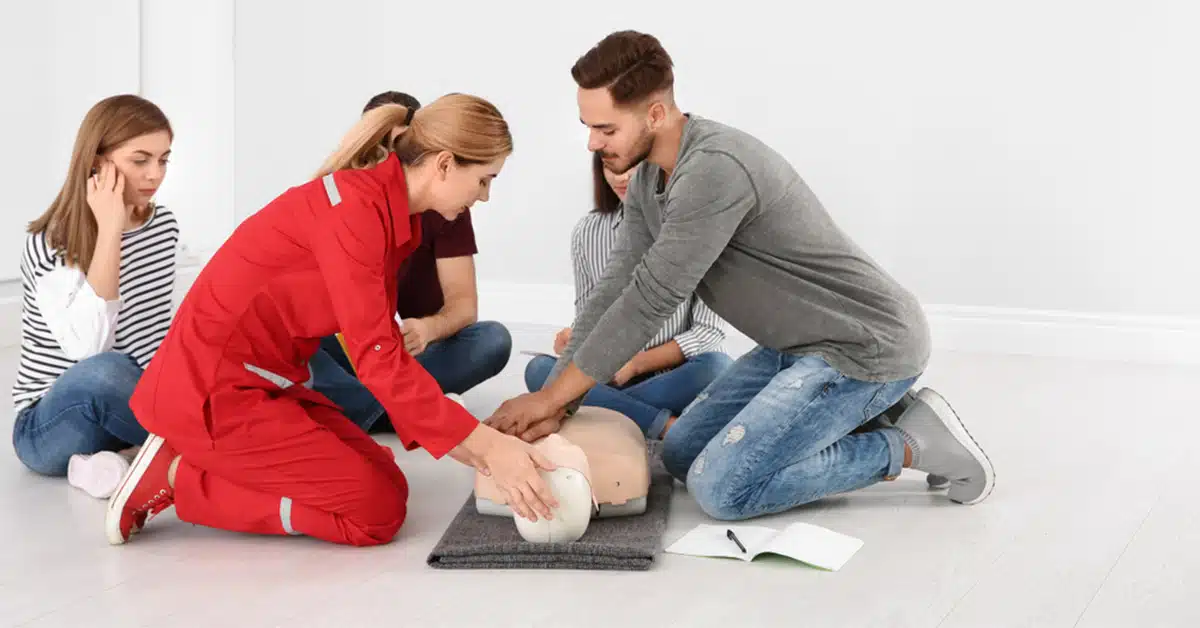
CPR is an emergency response skill that keeps participants familiar with procedures and emergency actions. Training includes chest compressions, rescue breathing, and the use of automated external defibrillators. Practice and refresher sessions help maintain skill, confidence, and readiness to respond during emergency situations. Here are a few benefits of refreshing your CPR skills regularly:
Fundamental Lifesaving Skills
Ongoing refresher training helps reinforce life-saving techniques, helping skills stay practiced, familiar, ready, and accessible in emergencies. Periodic practice maintains familiarity as standards evolve and new methods emerge. Refresher sessions provide structured opportunities to review and practice techniques, supporting confidence and readiness in their application. Updated skills enable the effective and timely use of techniques when needed.
Refresher training reinforces correct compression depth, hand placement, and rescue breathing, with a focus on proper technique and safe execution. It also provides instruction in the use of automated external defibrillators (AEDs), giving participants familiarity with the equipment. Simulated practice in training prepares students to act in real emergencies to relatives, co-workers, or members of the general public.
Heightened Emergency Readiness
Regularly updating cardiopulmonary resuscitation (CPR) skills helps prepare the mind for emergencies. Practice combines mental muscle memory with the physical performance of compressions, allowing participants to become familiar with the actions involved. Training provides families, workplaces, and groups with hands-on experience, and repeated practice reinforces individual and collective familiarity with procedures.
Emergency medicine evolves, and CPR protocols are updated periodically. Professional organizations, such as the American Heart Association, revise resuscitation guidelines based on emerging evidence. Refresher courses introduce these updated techniques, including changes to compression-to-breathing ratios, hand placement, and compression rates. These courses focus on reviewing the latest procedures and providing practical instruction.
Modern CPR training emphasizes consensus-based methods to maintain skill proficiency. Sessions allow participants to practice and integrate new recommendations into their routine knowledge. Regular review and practice support familiarity with techniques, helping participants feel prepared to respond appropriately in emergency scenarios involving family, coworkers, or the public.
Reliable Workplace Compliance
Companies sometimes require active CPR certification to align with workplace safety standards. Acquiring CPR knowledge helps employees understand proper procedures and supports adherence to these standards. Regular refresher training maintains familiarity with current protocols and helps uphold readiness in workplace situations.
Companies offering CPR training can address safety guidelines, insurance policies, and regulatory expectations. Organizations often provide training for entire teams, allowing staff to stay familiar with procedures and practice skills together. Routine group instruction supports consistent knowledge across employees and fosters confidence in responding appropriately during workplace emergencies.
Refresh Your CPR Skills Today
CPR skills can fade without regular refreshers. Continuing education helps maintain familiarity with procedures, reinforces proper technique, and keeps participants aware of updated protocols. Organizations such as Brooks CPR offer flexible renewal programs, including in-person classes, group or workplace sessions, and online courses with accompanying skills practice. Refresher training provides opportunities to review techniques, gain hands-on experience, and build confidence in applying CPR. Maintaining updated skills supports preparedness and familiarity, allowing participants to respond calmly and appropriately during emergencies.



